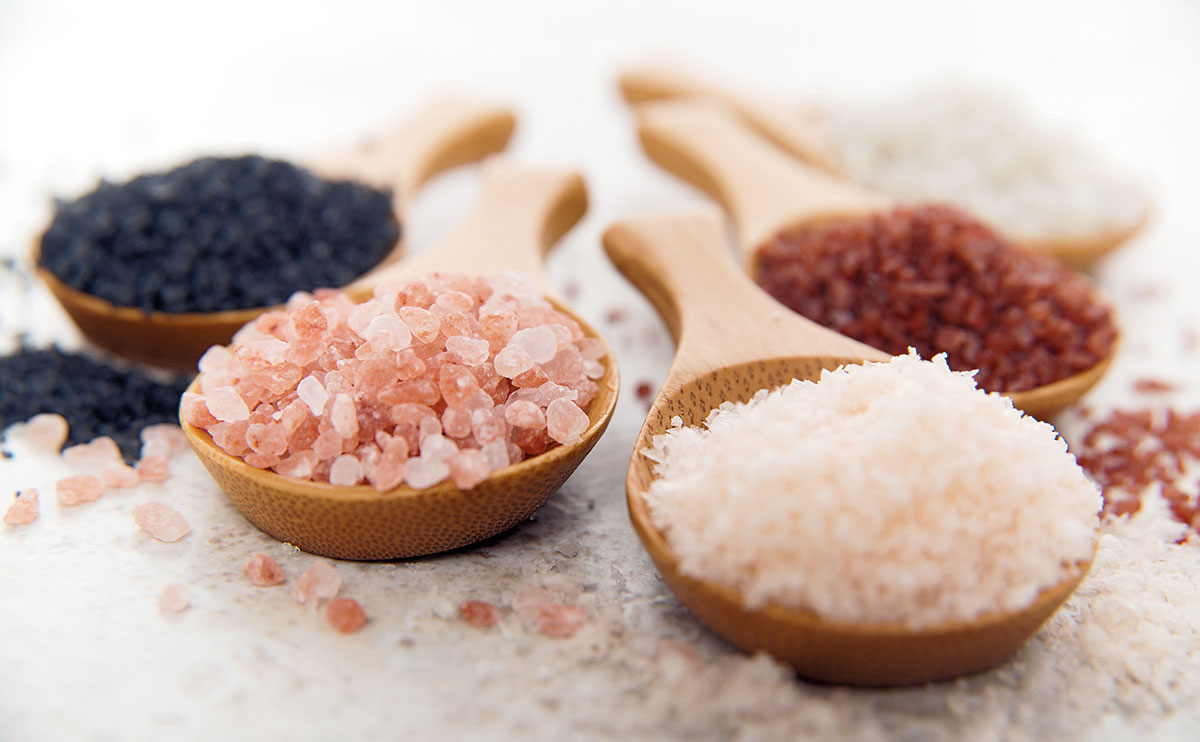SALT OF THE EARTH
To salt or not to salt – that is the question, and according to recent medical advice, the answer is yes! Here’s what to keep in mind when you’re in the supermarket aisles

COLOR
Refined sea salts are white, but almost all unrefined sea salts are colored either beige, pink, gray, red, or even black. The colors come from the mineral content the salt receives from where it has been harvested.
MOISTURE
Some unrefined sea salts are packaged with their moisture still intact. This keeps all of the trace minerals – over 80 in some cases – intact.
MINERAL CONTENT
Read what’s on the packaging and see what the salt’s composition is. It shouldn’t be entirely sodium chloride. You want to find numerous trace minerals – the larger the quantity, the better.
IODIZED SALT
Iodized salt is what’s mostly available. Iodine is an essential trace element to life and iodine deficiency was once a huge problem until manufacturers started to add iodine to salt. It’s a commercial, refined and inexpensive all-purpose salt that lacks trace elements. It can be an easy way to get much needed iodine in your diet.
SEA SALT
An all-purpose salt, available coarse or fine-grained, collected as sea water evaporates. Sea salt color will be bright white, which means it has been produced in a more industrial manner using indoor drying equipment rather than outdoor salt pans. These salts typically contain traces of many naturally occurring minerals including iron, zinc and magnesium.
FLEUR DE SEL
Fleur de sel or “flower of salt” is hand-harvested along the coast of France. The young crystals that form naturally on the surface of salt ponds are hand harvested for this premium quality salt. A delicate texture and clean flavor make this salt ideal as a finishing salt for grilled meats and vegetables, and to top baked goods or confections. Enjoy its crunchy texture.
PINK SALT
Pink salt, also known as Himalayan pink salt, is the most popular of the colored salts – unrefined, unprocessed, and mined by hand, making it one of the purest salts on earth. The pink hue is derived from its high mineral and trace element content, including calcium, magnesium, copper, and iron. It can be used in place of table or sea salt.
GREY SALT
Grey salt or sel gris is an unrefined, coarse organic sea salt, that’s moist and most often hand harvested in coastal regions of France. It takes its light grey color from the minerals absorbed from clay lining the salt ponds. It is considered by many to be the best quality sea salt available. Use for grilling and cooking, this salt is usually too moist to use in a grinder.
BLACK SALT
Black salt get its color from the charcoal that’s been added. Volcanic Hawaiian sea salt is jet black colored by activated charcoal made from coconut shells. The black will come off if used in cooking, so using it as a finishing salt is the best way to preserve its color. Enjoy it on eggs, fresh salads, seafood and fish.






